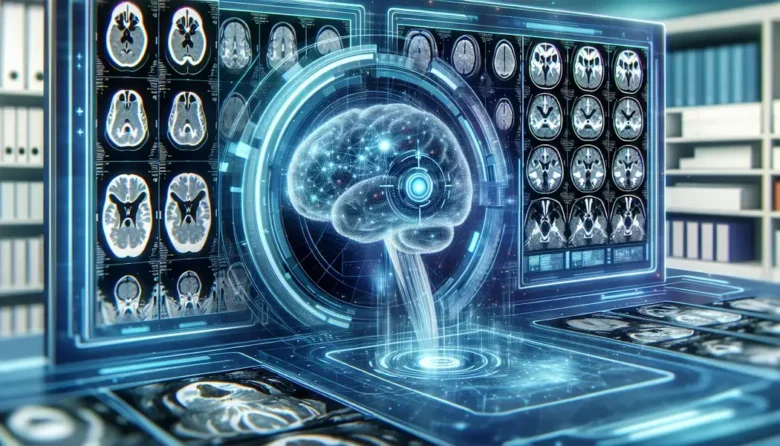Artificial intelligence (AI) is revolutionizing healthcare, especially telemedicine. AI-assisted diagnosis is revolutionizing how doctors remotely analyze data, detect diseases, and make clinical decisions. Traditional diagnostic accuracy relied on human skill and in-person examinations. Today, AI can analyze complex medical data, including scans, laboratory results, and patient histories, with extremely high accuracy and speed. This improves the accuracy of remote consultations and aids in the early detection of diseases. AI-assisted diagnosis makes it easier for patients to access high-quality medical care, enabling technology and medicine to save lives.
Applications of AI in Telemedicine Diagnostics:
The application of AI in diagnostics began with machine learning algorithms that can discover patterns in massive data sets. These algorithms ultimately learn to analyze medical images, predict disease prognosis, and develop treatment plans. AI plays a crucial role in telemedicine, where distance limits practical assessment.
It enables doctors to quickly and accurately understand digital health data, enabling rapid diagnosis in remote or challenging areas. Telemedicine is becoming more reliable and easier because AI systems can quickly evaluate large amounts of patient data and identify important information. Healthcare is becoming more efficient and data-driven and can continuously provide high-quality medical care.
Applications of AI in Medical Imaging and Analysis:
Diagnostics using artificial intelligence have had a significant impact on medical imaging. Image interpretation is crucial for radiology, pathology, and ophthalmology, and deep learning algorithms can significantly improve image interpretation capabilities. These computers, trained on millions of medical images, can recognize subtle patterns invisible to humans.
AI can detect early signs of cancer in CT scans or X-rays, diabetic retinopathy in retinal imaging, and neurological disorders in MRI scans. These capabilities help radiologists and clinicians review image data more accurately and confidently in telemedicine. AI can reduce diagnostic errors, standardize regional interpretations, and accelerate report generation. Increased efficiency can expedite treatment decisions and improve patient outcomes.
Beyond Imaging: AI-Driven Predictive/Preventive Diagnosis
The applications of AI-assisted diagnosis are expanding from image interpretation to predictive and preventive healthcare. AI can identify health problems before symptoms appear by analyzing electronic health records, data from wearable devices, and patient histories. AI algorithms can predict heart attacks based on minute changes in vital signs or lifestyle data. Artificial intelligence (AI) can also monitor patients remotely and alert doctors to worsening conditions during telemedicine. This predictive capability helps us take timely action and prevent serious problems. In addition to personalized care, AI can also help healthcare systems manage population health by identifying emerging health trends and potential outbreaks.
Improving Diagnostic Accuracy and Reducing Human Error:
Integrating AI into telemedicine can improve diagnostic accuracy and reduce human errors. Fatigue and work limitations can cause even the most experienced doctors to miss subtle signals. AI can analyze vast amounts of data impartially, examining every aspect. These intelligent systems can support doctors in their decision-making rather than replace them. During remote consultations, AI can identify scan abnormalities or provide diagnostic results that clinicians can confirm. This collaboration between humans and machines improves diagnostic accuracy and reduces inconsistencies in diagnostic results. Patients can receive more accurate diagnoses and personalized treatment plans, regardless of their location.
Challenges and Ethics of AI-Assisted Diagnosis:
Artificial intelligence (AI) offers enormous potential for telemedicine diagnostics, but it also faces numerous challenges. Data privacy is a key concern due to the vast amounts of sensitive medical data that AI systems must access. Maintaining public trust requires secure data processing and informed patient consent. Moreover, algorithmic bias—AI models trained on unrepresentative data—can produce biased results, leading to inconsistencies in medical quality.
Excessive use of AI without human oversight can lead to misinterpretations. We need ethical standards and legal requirements to guarantee the transparency, accountability, and fairness of AI tools. Healthcare institutions must also train experts to apply AI technologies in clinical settings, ensuring that human judgment plays a crucial role in diagnosis.
The Future of AI-Assisted Telemedicine Diagnostics:
With advances in deep learning, computer vision, and natural language processing, the potential of AI-assisted telemedicine diagnostics is enormous. AI systems will soon combine real-time information from wearable devices, lab tests, and patient images to provide a complete health assessment. These technologies will be able to diagnose diseases, create personalized treatment plans, and predict treatment outcomes.
The combination of AI with augmented reality and robotics will enable physicians to perform examinations and supervise surgeries remotely. As these technologies develop, telemedicine will evolve into a fully intelligent healthcare network that provides patients worldwide with comprehensive, accurate, and preventative medical services. Modern medicine will shift from passive treatment to proactive health management.
Conclusion:
Artificial intelligence-powered diagnostics are spearheading a digital revolution in telemedicine, revolutionizing the delivery of care and the patient experience. AI improves image accuracy and enables predictive health assessments, making diagnoses faster, more reliable, and easier. It provides clinicians with data-driven insights and ensures accurate diagnoses, regardless of location. To maintain trust and integrity in healthcare, we must prioritize data protection, ethical use, and human oversight while embracing this technological shift. The combination of AI and humanistic care enables telemedicine to provide personalized, life-saving medical services. AI ushers in a smarter, safer, and more connected era of healthcare.
FAQs:
1. How does AI improve diagnosis in telemedicine?
AI helps doctors make remote decisions by analyzing medical images, patient data, and clinical records faster and more accurately.
2. Can AI detect diseases earlier than humans?
Yes, artificial intelligence (AI) can detect patterns and anomalies in medical data before symptoms appear, enabling early identification and prevention.
3. Can AI-assisted diagnostics accurately diagnose complex diseases?
AI systems trained on massive datasets can detect complex diseases, but only doctors can diagnose and provide treatment.
4. What challenges does AI face in diagnosis in telemedicine?
Data protection, reducing algorithmic bias, ethical transparency, and the integration of AI with healthcare systems are all challenges.
5. What is the future direction of AI in telemedicine diagnosis?
The future direction lies in AI algorithms that can integrate real-time data, predict diseases, and provide personalized, global healthcare.




